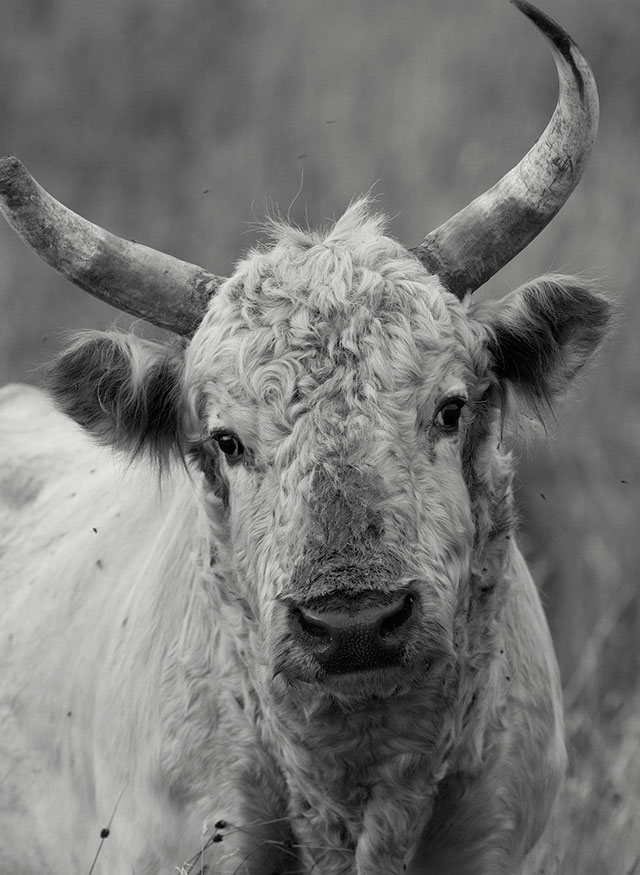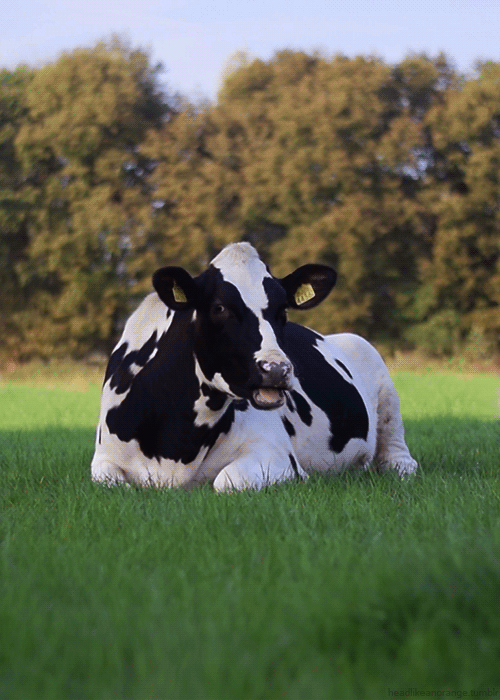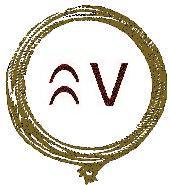Basic Cattle Facts & Terms
Cow
Intelligence & Ability - YouTube video
Cattle Terminology: The term “cow” refers only to the mature females of the bovine population. As a herd they are cattle (plural) but in English there is no word for all genders in singular. Calves are young cattle (their first year) and are either heifer calves or bull calves. Heifers are young females that have not calved. First-calf heifers are heifers who are expecting or have their first calf at side, usually at 2 years of age (in production herds) or at 3 years of age (in smaller, slower maturing breeds). At some time (usually when 1st calf is weaned) before she has her second calf, she becomes a young bred cow. Males are bulls, and when castrated, then steers. Classification: Mammalia Cattle are domesticated ungulates (hoofed animals with two toes on each hoof). Bovidae include ruminates with paired, hollow, unbranched horns that do not shed, and with an even number of toes. This family also includes Gazelles, Antelopes, Sheep and Goats. Other Bovidae that are so closely related to true cattle that they can interbreed include the bison and yak. With the exception of a small population of cattle in southeast Asia, most domestic cattle are descendants of wild oxen known as aurochs (above right: Augsburg artist antique depiction of an aurochs). Aurochs were a species of wild cattle which evolved in India about two million years ago. They were said to be formidable creatures, strong and fearless, huge in stature, with bulls measuring as much as six and a half feet at the shoulder, and weighing 1,000 kilograms (2,200 lbs) with very long horns. Aurochs went extinct in 1627. Cattle were first domesticated in southeast Turkey around 10,500 years ago. The word “cattle” comes from the Old French “chatel,” as in chattel, meaning property. In many parts of the world, cattle remain an indicator of economic wealth.
North
American cattle inventory: All cattle and calves in the
United States and Canada combined totaled 106 million head on January
1, 2018, up 1 percent from the 105 million head on January 1, 2017.
All cattle and calves in the United States as of January 1, 2018, totaled
94.4 million head, 1 percent above the 93.7 million head on January
1, 2017. All cattle and calves in Canada as of January 1, 2018, totaled
11.6 million head, up 1 percent from the 11.5 million head on January
1, 2017. The world cattle inventory went down
in 2017 (from 1.3 billion) to 998.3 million head,
with about 30% in Asia, 20% in South America, 15% in Africa, 14% in
North and Central America, and 10% in Europe. Cattle Breeds: There are an estimated 920 different breeds of cattle world-wide. The 10 states in the US with the largest cattle populations are Texas, Missouri, Oklahoma, Nebraska, South Dakota, Montana, Kansas, Iowa, Kentucky, and Florida. There are numerous breeds of cattle raised in North America. Heritage breeds have been around for centuries, while newer breeds have been developed in recent decades by mixing older breeds. New breeds start out as composites (crossbreeds with purpose), and after several generations (usually 5 or more) their DNA becomes set to a predictable uniform kind of cattle, and a new breed is established. Each breed is characterized by its own distinct genotype and phenotype; that is, its own unique genetic DNA, its history, its purpose (beef, dairy or dual-purpose) and other traits it was developed for such as specific survival traits (regional resistances & adaption), size, temperament, color, horns, markings, hair length, etc. Classifications: There are two domestic cattle breed classifications: Bos taurus and Bos indicus. Bos t Taurus Cattle Breeds:
List
of Bos taurus (taurine) cattle | Beef2Live.com | Jan 30,
2018
Bos t Indicus Cattle
Breeds: List
of Bos indicus (Zebu) cattle | Beef2Live.com | Jan 27,
2018
Normal Cattle Vital Signs Normal Gestation: Like humans, is 9 months. Cattle have a natural lifespan from 15 - 25 years. When scientists mapped out the bovine genome in 2009, they discovered that cattle have about 22,000 genes; 80 percent of their genes are shared with humans. Cow: Adult female
that has produced a calf The meat from cattle is called beef. The average American eats about 65 pounds of beef each year. Cattle produce about 25 billion pounds of meat each year. The combined value of the cattle and beef industry is $200 billion. Over 98% of the beef animal is used when it is processed. About 45% of the animal is used for meat and the rest is used for other byproducts including leather, china, glue, film, soap, pharmaceuticals, insulin, gelatins. “Cows are excellent recyclers,” says Dr. Mark Alley, DVM, a professor of bovine health at North Carolina State University. “A lot of byproducts in the manufacturing of things like beer, candy bars and potato chips, which would otherwise end up in landfills, are actually an excellent feed source for cattle.” The hide from one cow can make 144 baseballs, 20 footballs or 12 basketballs. In an average herd, there is 1 mature bull to every 25 - 30 cows. Full size cows drink about a bathtub full of water and eat around 40 pounds of forage a day. Cattle drink water by the use of a sucking action, they do not lap up water like a cat or dog. You can guess the age of horned cattle by counting the number of rings on their horns. Cows have 32 teeth; 6 molars on the top and bottom of each side, 8 incisors on the bottom front, and a tough pad of skin instead of teeth on the top front. How to determine the age of a cow: The age of a cow can be determined by examination of the teeth and less perfectly by the horns. The temporary teeth are in part erupted at birth and all the incisors are erupted within twenty days. The first, second and third pairs of temporary molars are erupted in thirty days. The teeth have grown large enough to touch each other by the sixth month. They gradually wear and fall in eighteen months. The fourth permanent molars are through at around the fourth month. The fifth at the fifteenth month and the sixth at two years. The temporary teeth begin to fall at twenty-one months and are entirely replaced by the thirty-ninth to the forty-fifth month. Like many other grazing animals cattle have one stomach which is divided into four compartments or chambers: the rumen, reticulum, omasum and abomasum. This allows them to digest grain and grasses most effectively.
In a standard size breed, the rumen holds some 50 gallons of partially digested food. Good bacteria in the rumen helps digest the cow's food and provides protein for the cow. This is where cud comes from. Chewing its cud is necessary for a cow's health and survival. Proper teeth alignment, for adequate chewing, is necessary for a cow to thrive. Although the cud is regurgitated, cows can’t actually vomit. When cows digest food, rumination (digestion / fermentation) results in a large amount of methane; cattle produce 250 to 500 liters (and by some accounts, up to 1000 liters) of the gas per day. According to Stanford University, (I take liberal tax-funded university research with a bag of livestock salt, myself...) livestock account for anywhere between 18 and 51 percent of global greenhouse gas emissions measured in CO2 equivalent. With all of the eating and drinking that a standard sized cow does in one day, they will urinate about 30 gallons and produce about 60 pounds of manure. So in one year, a cow will produce about 20,100 pounds of manure – that’s over 10 tons. Normally cows spend about 8 hours
per day eating, 8 hours sleeping, and 8 hours chewing her cud.
|
Cows are social animals, and they naturally form herds. They don’t like to be alone. So if a cow isolates herself, she's either not feeling well or she's about to give birth. And like humans, cattle will make friends with some herd members, while avoiding others. They form close bonds and spend much of their time with 2-4 favorite individuals. They also may dislike particular individuals and can hold grudges for years. Cows become stressed when they are separated from their favorite friends. In a study measuring isolation, heart rates and cortisol levels, researcher Krista McLennan concluded that, "When heifers have their preferred partner with them, their stress levels in terms of their heart rates are reduced compared with if they were with a random individual." Cows display emotions and have been shown to produce more milk when they are treated better and as individuals. Just like dogs, cows enjoy a good rubdown. Researchers have found that if you name a cow and treat her as an individual, she will produce almost 500 more pints of milk a year. Cows show their excitement when let out into a field after long periods confined indoors. Cattle also get excited when they solve problems. When faced with the challenge of trying find out how to open a door to reach food, their heartbeats went up, their brainwaves showed excitement, and some even jumped into the air. Cows can have regional accents. After a group of dairy farmers noticed their cows had different moos, language specialists determined that, "In small populations such as herds you would encounter identifiable dialectical variations which are most affected by the immediate peer group." Cattle like to sleep close to their families, and sleeping arrangements are determined by individuals’ rank in the social hierarchy. Cows are devoted mothers. Heifers sometimes need help bonding the first time, if their first calf is born with much difficulty (a lot of pain) when it's their first baby. Experienced cows that lack mothering instinct should be culled. Good mother cows are expected to be protective. If cows are treated properly, and are way beyond being protective, they might need culling for poor temperament (temperament score charts).
Speed: Depending on their breed, cattle can run up to 20 mph. A good cowhorse can sprint 40-50 mph. Drunken rural carousers swear by their stories of tipping over cows in the middle of the night, but most cattlemen asssure that there's more urban myth going on than any tipping. A 2005 study at the University of British Columbia concluded that tipping a cow would require an exertion of 2,910 newtons of force; meaning that a 4’7” tall cow pushed at an angle of 23.4 degrees relative to the ground would require the equivalent strength of 4.43 people to tip the poor thing over. Cattle have almost 360° panoramic vision, allowing them to watch for predators or humans from all angles. Translation: It’s nearly impossible for would-be cow-tippers to sneak up on them. Cattle have an excellent sense of smell. They can detect odors up to 6 miles away, which is helpful in detecting imminent danger. (Cow tippers have been reported to smell of alcohol.) Cattle can hear both low and high frequency sounds beyond human capability. Cows are red-green colorblind. In a bullfight or rodeo, its the flapping of a cape that attracts the bull, not the red color. A spotted cow’s spots are like a fingerprint. No two cows have exactly the same pattern of spots. They are all different. The U.S.’s cattle herd size is shrinking. The total cows in the US are at their lowest level since 1952. There are about 11 million cows in America. Texas has the most beef cows, and Wisconsin has the most dairy cows. The hamburger debuted at the 1904 World’s Fair in St. Louis. Almost 2000 quarter pound hamburgers can be made from the ground beef in one cow. Christopher Columbus brought cows to the United States as part of his second voyage in 1493, alongside other livestock including horses and sheep. He set off on this trip from the port of Cadiz in Spain and, after this time, European settlers to the US brought over various different breeds of cattle when they arrived. Another source says that the first cow in America arrived in Jamestown colony in 1611. Until the 1850's, nearly every family had its own cow. The first regular shipment of milk by railroad was between Orange County, New York, and New York City and began in 1841. In 1856, Gail Borden invented the condensed milk process. This process removed some of the water from milk so it would take up less space. Refrigeration came into use in 1880. The first pasteurizing machine was introduced in 1895. The first major commercial AI program took place in 1936 in Denmark, using more than 1000 dairy cows & resulted in a success rate of 59% (which was interestingly better than the natural service conception rates on that farm). Dairying has improved through the years. Today, one cow can produce the milk that it once took 10 cows to produce. There are about 350 udder squirts in a gallon of milk. Before milking machines were invented in 1894, farmers could only milk about 6 cows per hour. Today, farmers use machines to milk more than 100 cows per hour. Dairy cows provide 90% of the world's milk supply. The highest producing dairy cows can give over 25 gallons of milk each day. That's 400 glasses of milk! Around 9.2 million cows are being milked on 110,000 farms in the United States. More than 99% of all dairy farms are family owned and operated. U.S. cows give an average of 2000 gallons of milk each, per year. An average U.S. cow produces 53 lb of milk per day, or 6.2 gallons. Milk is better for cooling your mouth after eating spicy food. Milk products contain casein, a protein that cleanses burning taste buds. It takes 12 pounds of whole milk to make one gallon of ice cream. It takes 21.2 pounds of whole milk to make one pound of butter. The natural yellow color of butter comes mainly from beta-carotene found in the grass the cows graze on. Hindu nations believe that cows are holy and there are strict laws to protect them. The toughest laws are in the central Indian state of Madhya Pradesh, where anyone convicted there of killing a cow or taking it somewhere to be killed can be imprisoned up to seven years. A high priced cow named Missy
brought $1.2 million at the Royal Agricultural Winter Fair in 2009.
|
|
SOURCES:
Cattle
101, Beef2Live.com, Bairnsley.com,
Stackyard.com, OneKindPlanet.org, DairyMoos.com, VetStreet.com, Facts.net, MNN.com,
FarmsForCityKids.org, Think-Differently-About-Sheep.com, AnimalCorner.co.uk,
UmpquaDairy.com, PBS.org, World Animal Foundation

 Subspecies: Bos taurus indicus
Subspecies: Bos taurus indicus


 Cattle
are extremely curious and inquisitive, and will investigate anything
and everything.
Cattle
are extremely curious and inquisitive, and will investigate anything
and everything. The
Chillingham cattle are thought to be the only survivors of herds
of wild cattle that once roamed freely through the forests of
Great Britain. In modern times, now only a modest herd of these
animals live in a beautiful enclosed 365 acre parkland at Chillingham
in Northumberland which has been their home since the 13th century.
The
Chillingham cattle are thought to be the only survivors of herds
of wild cattle that once roamed freely through the forests of
Great Britain. In modern times, now only a modest herd of these
animals live in a beautiful enclosed 365 acre parkland at Chillingham
in Northumberland which has been their home since the 13th century.